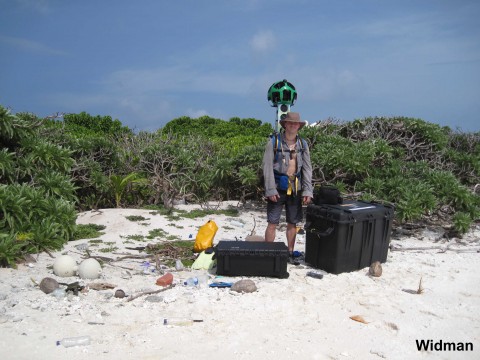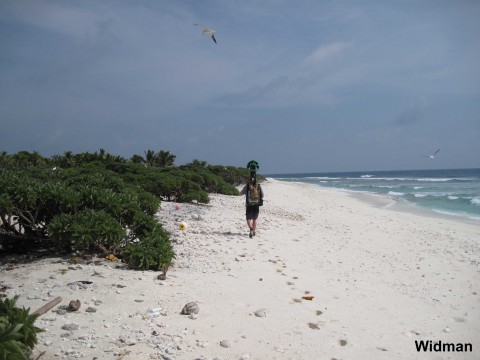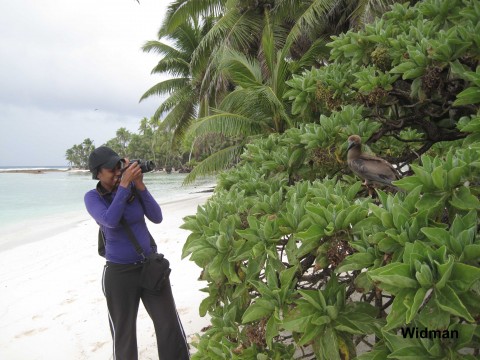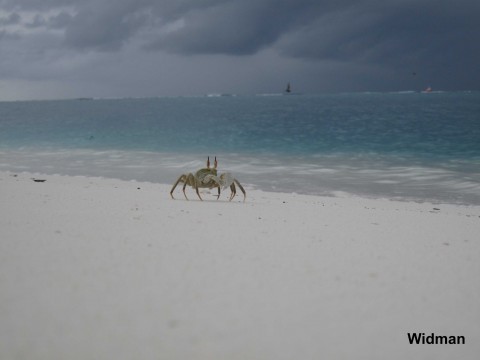BIOT MPA Survey Expedition 2015 - Day 2 - Great Chagos Bank Sea Cow Island and Middle Brother

The day started at 8am prompt with a launch onto the water for the short transit across to Sea Cow Island. This is one of the more beautiful islands of the archipelago but is really difficult to get onto as it is surrounded by unbroken reef over which waves break right onto a very steep beach. We anchored our dinghy well behind the breaking waves and jumped in for the swim ashore.

As predicted the arrival on shore was battering, the broken foamy waves grinding us up the coarse sand while we tried to push and haul our waterproof camera boxes up the beach. Perhaps it is this rough landing that has maintained this island as one of the most pristine examples of natural terrestrial vegetation in the Chagos Archipelago. The island vegetation here has never been cleared and planted with coconuts so there are still wide open grassy areas and stands of towering hard wood trees. The grassy areas are suitable for ground nesting birds whilst the hardwoods are home to large numbers of seabirds that find security in the strong branches unlike the swaying fronds of palm trees.
After spending several hours walking around the island and doing some transects through its centre we reversed our swim through the pounding waves (certainly got the heart racing) and headed back to the research vessel for the transit to Middle Brother Island further to the North along the western edge of the Great Chagos Bank.

Middle Brother presented our first opportunity to get Nadine ashore for a visit onto the outer islands of the Chagos. A channel through the reef around this island allows for a sheltered landing directly onto the beach. Unfortunately for Nadine it belted it down with rain. Fortunately in the tropics this doesn’t make life all that uncomfortable just dampens the warmth a little. On the walk around this island with the Trekker camera I disturbed a number of crabs on the rocks – as they scuttled for the protection of water Morey Eels shot out from beneath ledges in the rock pools and tried to grab them. Away from one danger straight to another. Risky living for crabs around these islands.

Also evident around Middle Brother is just how much the shoreline has receded in places – whole stands of coconuts felled in the shallows after the sand had been washed from around their root systems leading them to collapse into the advancing water.
The shallow Catlin Team got in two transects during the day as well – with such technical gear getting everything functioning correctly at the start of an expedition is a challenge but their long hours paid off as they were successful in operating the gear off both of the islands stops. The Catlin deep team also had successful dives. They are collecting coral samples that will be sent back to museums in Australia for identification. Nadine has been putting her training on the Connect Chagos program to good use as she has been assisting the scientists catalogue the corals after each dive.
Another good day on expedition with a few adventurous stories and sore muscles to let us know we’re well into it now…

